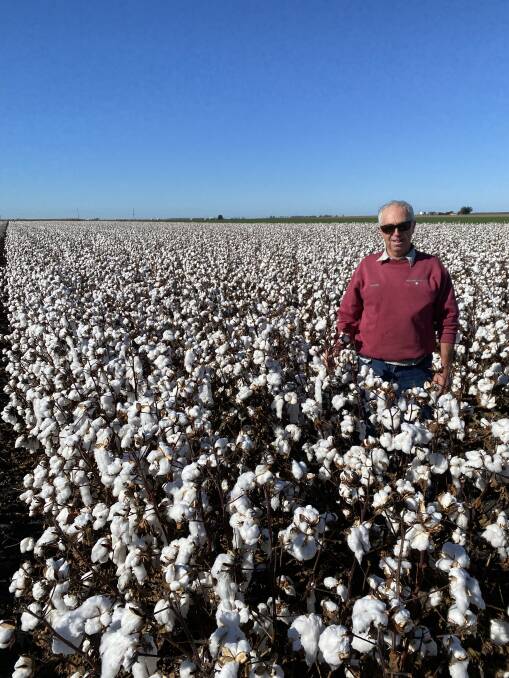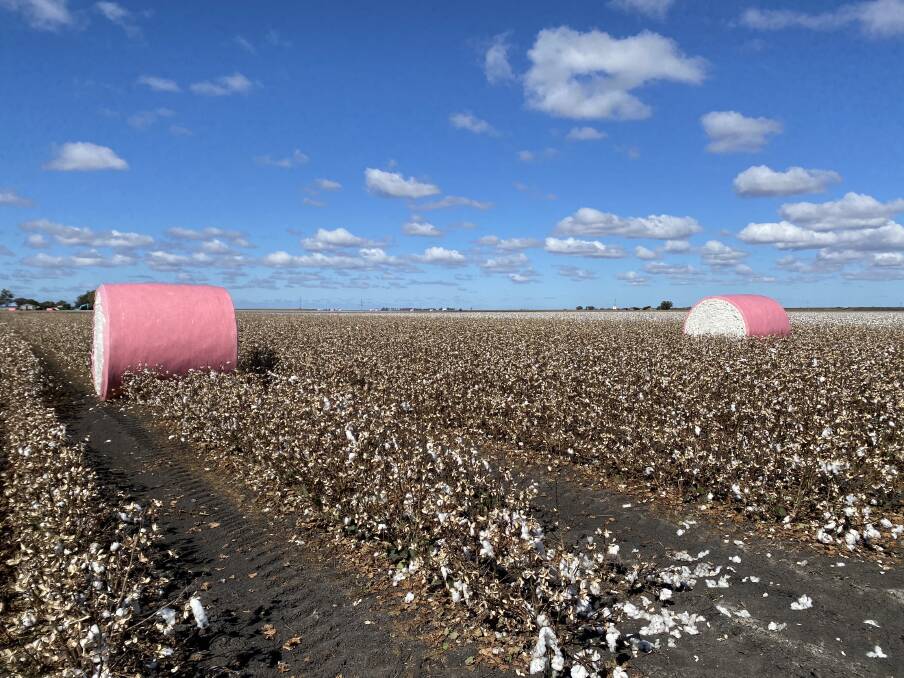
The application of a gravity-powered, micro-irrigation system to the cotton industry may make some skeptical, but the proof of its effectiveness is in the bales.
Subscribe now for unlimited access to all our agricultural news
across the nation
or signup to continue reading
Trialling the N-Drip system in 11 hectares of their 70ha crop this year, the Rother family, Nangwee, saw a water saving of 26 per cent combined with a 47pc greater yield when compared to their flood irrigated crop.
"It was a stronger crop, a bigger crop and the results are proof for itself," Howard Rother said.
"The drip field went 11 bales to the hectare compared to the flood which was 7.5; it was a remarkable result.
"The difference between 7.5 bales and 11 meant the system more than paid for itself in a year."
The bales per megalitre result also paint a clear picture, with 3ML/ha applied to the drip field for a yield of 3.667 bales, while the flood field was grown on 4ML/ha to yield 1.875 bales/ML.
"The considerable water saving means we can put another crop in there, so we're going to put barley back in and we'll be able to get another crop out of it," Mr Rother said.
"We were, I wouldn't say skeptical, but wondering how good it was, and then we found that it was exceptional."

Mr Rother said it was an ideal year to trial the system, given the long dry spell.
"Not every year is going to be like that, every season is different and as you know in farming, you can't extrapolate and say every year is going to be the same," he said.
"This was a particularly good year where the drip was effective, given that long dry period from about November right through to the end of January and that's where this system shines."
The results are enough proof that the system is worth investing in. "We're going to install another field, [bringing it to] 44ha in total.
"The two fields we have now in drip are direct from the bore; the next field we are going to do later in the year is going to be from the dam.
"It will be exciting to see how we can develop it from the dam, a larger volume of water, and we'll probably be doing 20ha in one shift, but then we might need a different system [set-up].
"N-Drip are going to design it to suit that because we have a bit of water in storage; we've had good rain since February so we're going to try one field from the dam, which is exciting."
N-Drip Australia general manager Udi David Stern said they were happy with how the trial crop performed.
"We had a good control field where we had the opportunity to compare conventional flood irrigation versus N-Drip and we measured both the irrigation and the yield," he said.
"Those two blocks started with the same history - fallow for three years, planted the same day in a single skip situation, and we used the same variety.
"We've proven for the last two seasons that N-Drip is an amazing solution for cotton."
The system isn't limited to just cotton - with application abilities in grain crops, horticulture, and cane - but Mr David Stern said they "have a very good way of adding value to cotton growers".
"We have other growers where we've saved 50pc of the water," he said.
"The important thing that we see - because cotton demands so much water and the important asset for the grower is the water - is the megalitre, so when they're looking at the yield results they're more interested to know the bale/ML rather than bale/ha.
"In Howard's case, we doubled it so there's nearly a 100pc increase in the bale/ML efficiency."

